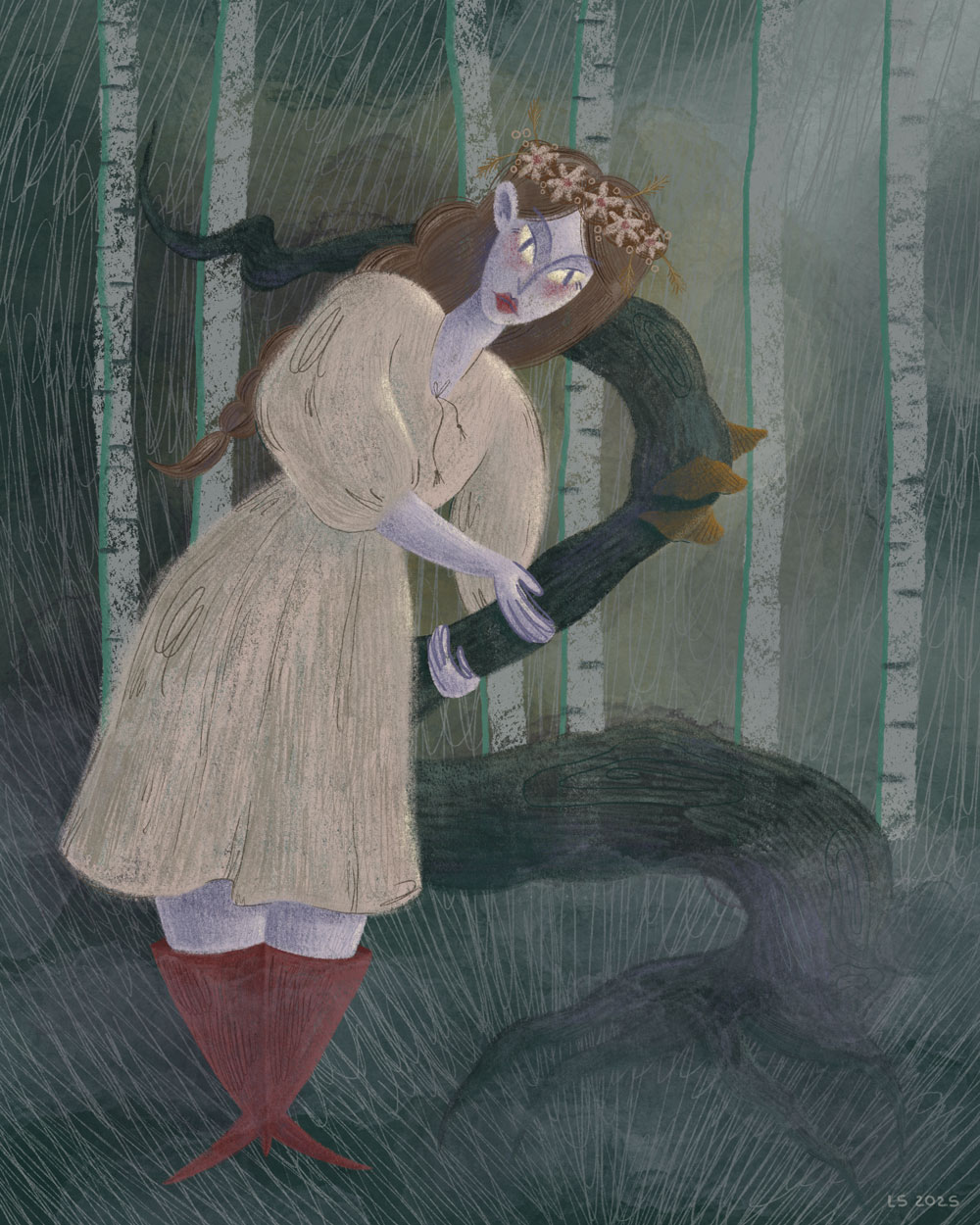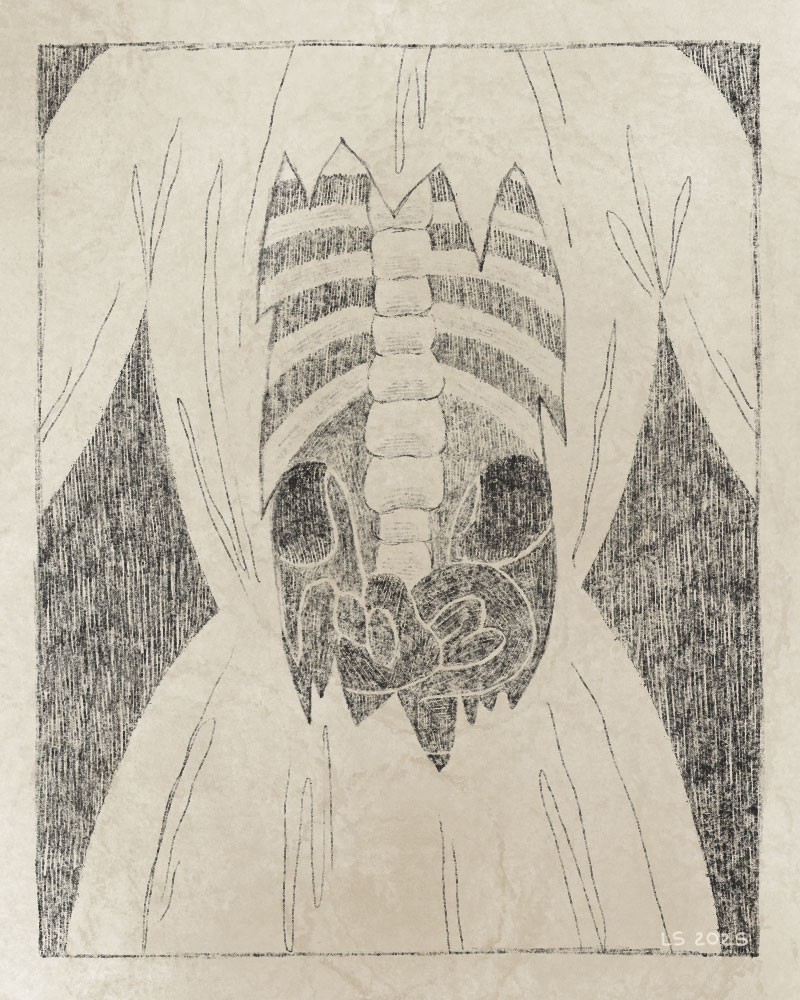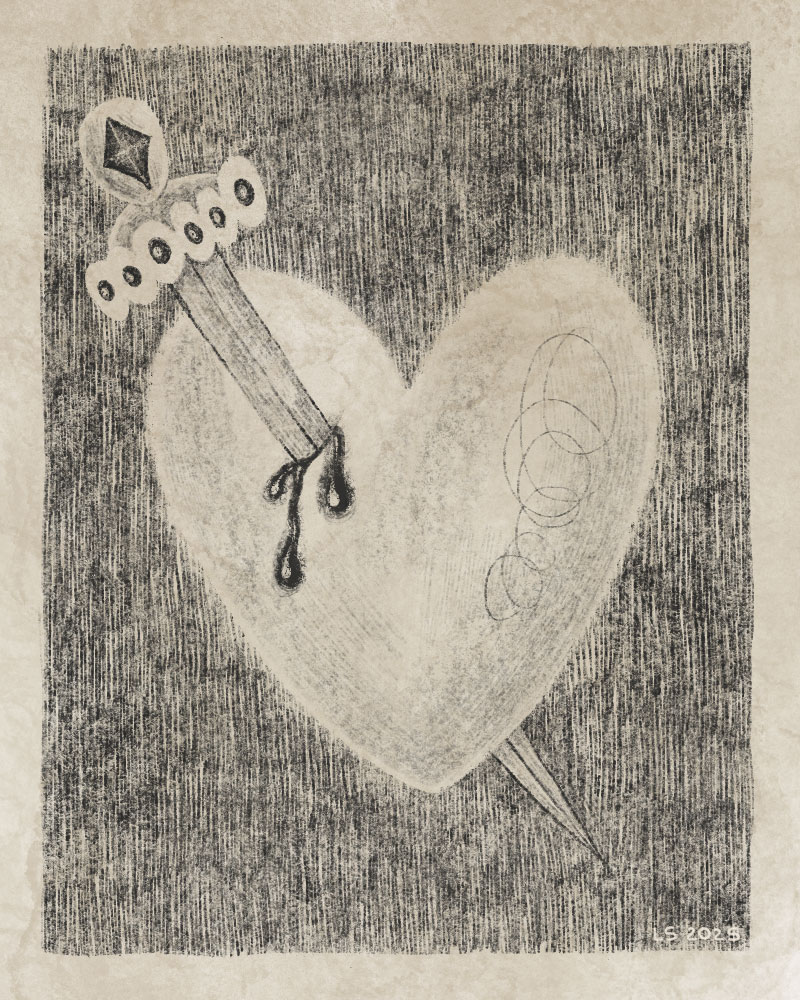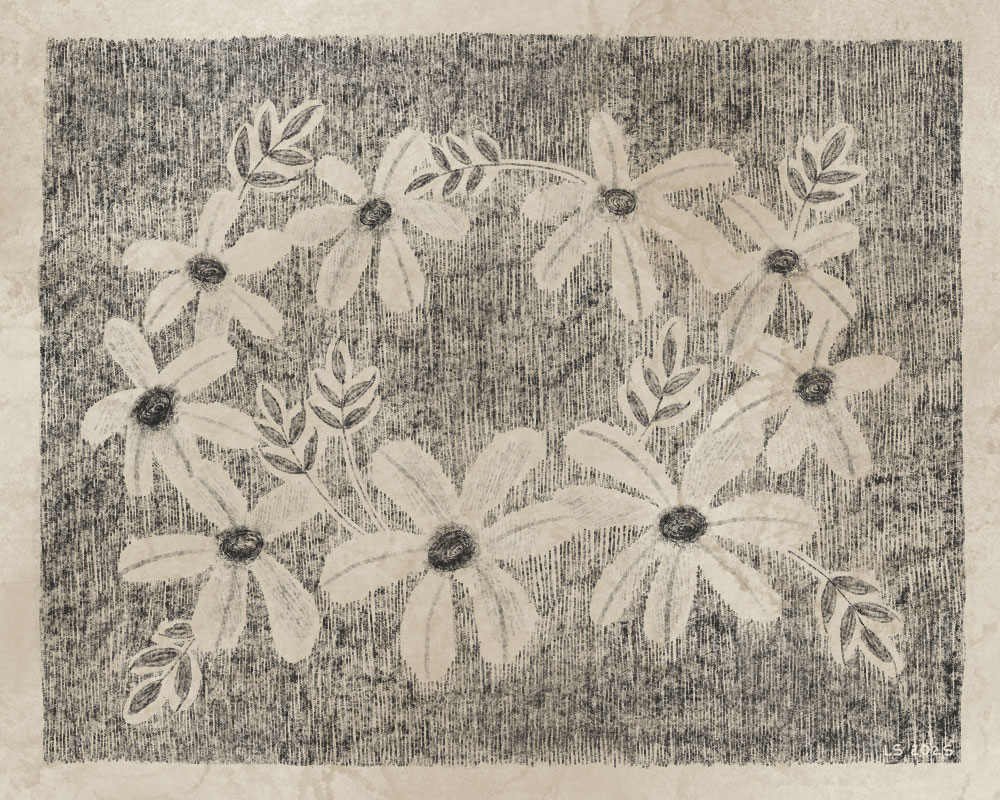Mavka

Mavkas might be the most well-known forest spirits in Ukrainian folklore literature. They are, first of all, the spirits of young women or girls who ended their lives tragically, often because of unrequited love. They always remain between two worlds: Nav – the otherworld, and Yav – the world of humans. There are many different types of mavkas: forest, steppe, and mountain spirits.

Appearance
According to people, a mavka is a beautiful, slender girl with large eyes and long eyelashes. She is dressed in a long white shirt or dress and always walks barefoot. She has long hair, always decorated with a wreath of flowers, but the type of flowers depends on where the mavka comes from.
- Field mavkas have wildflowers in their hair.
- Forest mavkas wear wreaths made of branches of the tree they live on (willow, linden, maple).
- Mountain mavkas use flowers gathered from the mountains.
At first glance, she looks like an ordinary girl, but as soon as you see her back, everything becomes clear: instead of a back, mavkas have a dead womb, where a heart that does not beat, blackened lungs, and other organs are visible.
Origins of Mavkas
Mavkas may appear in different ways:
- Girls who ended their own lives because of unhappy love and refused to go to the world of the dead.
- Girls who voluntarily agreed to transformation after meeting a spirit, enchanted by their persuasion and magical suggestion.
- Girls who chose to become mavkas, often those considered not beautiful, old maids, not very intelligent, or with bodily or health defects, believing they would become eternally young and beautiful.
- Children who died before christening, or very early, and whose souls did not enter the world of the dead within seven years – they were taken by the mavkas.

Behaviour and Protection
Because of their longing for love, mavkas can lure and seduce men, drawing them into the forest. Men could only protect themselves by giving a comb; other methods, such as wormwood or lovage, did not help.
Girls, however, could protect themselves: carrying wormwood, lovage, or garlic made the mavkas avoid them.
People treated mavkas with caution, though they were guardians of the forest, waters, fields, and nature. To prevent harm to crops or mischief, people tried to appease them.
During Nav Week, special care was taken not to anger mavkas, as they awoke from winter sleep like rusalkas and needed peace for recovery. Ukrainian ancestors believed that during this week, no work should be done in the field or forest – no digging, sowing, or chopping.

Mavkas’ Habitat
Mavkas live everywhere, but trees were usually chosen as their main homes, becoming sisters or mothers to them. They could also live in the steppe, in large bushes, dark deep forests, high up in the mountains, or even in caves. That’s why you can always spot them wearing wreaths – they love nature, are deeply connected to it, and are always gathering new flowers to decorate their beautiful long hair.
Types of Mavkas
There are many subspecies of mavkas, and in the past, they were not united under one name. In Ukrainian legends, different names appear, often linked to plants, shrubs, trees, or natural phenomena.
- Forest Mavkas – berezytsia, verbitsia, dubytsia, osynytsia, vyshnytsia, etc.
- Field Mavkas – hrechyukha, ovsyanytsia, zhytnytsia, poludnytsia.
- Others – kanuperytsia, grozovytsia, nichna-marukha, etc.